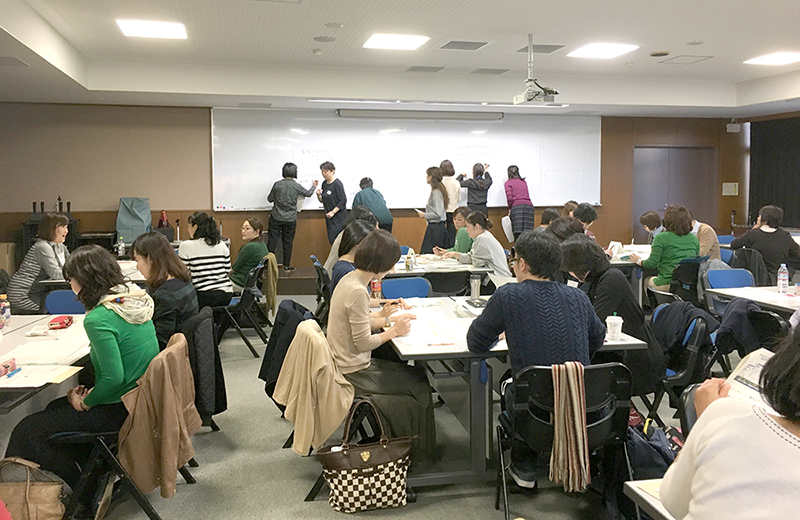Innovation in Nursing Science
VR for dementia educatioin
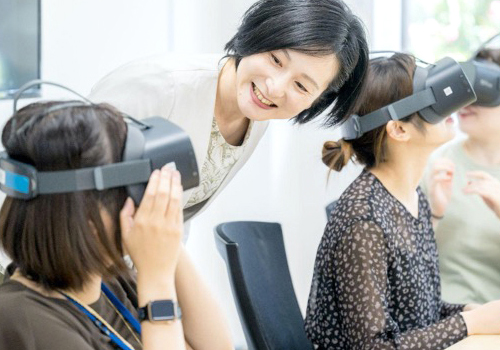
As the population ages, more and more elderly people are living with dementia, and efforts are being made to create “Dementia-Friendly Communities (DFC)”. Education is required so that people other than medical and nursing care professionals, such as the general public and employees in the service industry, have correct knowledge about dementia and can provide necessary support. The aim of this research is to develop an educational program using virtual reality (VR) technology that enables a first-person experience from the perspective of a person living with dementia in order to eliminate prejudice against dementia and to help people with dementia when they are in need of assistance. The program is oriented towards local residents and is currently being implemented in the community to verify its effectiveness. So far, the program has shown to effectively raise awareness and helping behavioral intention toward people with dementia.
Nurse-Friendly Visualization

Takahashi T, Nakagami G, Murayama R, Abe-Doi M, Matsumoto M, Sanada H. Automatic vein measurement by ultrasonography to prevent peripheral intravenous catheter failure for clinical practice using artificial intelligence: development and evaluation study of an automatic detection method based on deep learning. BMJ Open. 2022;12(5):e051466. doi: 10.1136/bmjopen-2021-051466.
Abe-Doi M, Murayama R, Komiyama C, Tateishi R, Sanada H. Effectiveness of ultrasonography for peripheral catheter insertion and catheter failure prevention in visible and palpable veins. J Vasc Access. 2021:11297298211022078. doi: 10.1177/11297298211022078. Epub ahead of print. PMID: 34075824.
Visualization is one of the greatest challenges in nursing research. Inability to visualize what is happening inside a patient can have devastating consequences, but point-of-care ultrasound is an innovative way around this problem. Ultrasound is a noninvasive, real-time visualization of the patient’s body and is highly compatible with nursing care. So far we have visualized many nursing targets such as pressure ulcers, voiding, swallowing, catheter management, and medical examinations, and are seeing an explosion in the use of this technology in current clinical practice. We are also working to create an automated image processing AI based on machine learning to interpret images for nurses to use with greater ease and efficiency.
VR-based Midwifery Education
Virtual reality (VR) is defined as an artificial computer-generated environment that is experienced through sensory stimuli such as sight and sound. It is expected that VR technology will be widely adopted in nursing and midwifery education, but its use in these fields is still in its early stages worldwide.
Currently, we are conducting international collaborative research to broaden the application of VR technology in the fields of midwifery and nursing. We are also developing VR teaching materials with the support of the Department of Clinical Information Engineering, Graduate school of Medicine, UTokyo. We hope our findings and new technologies will be helpful for nursing and midwifery education.
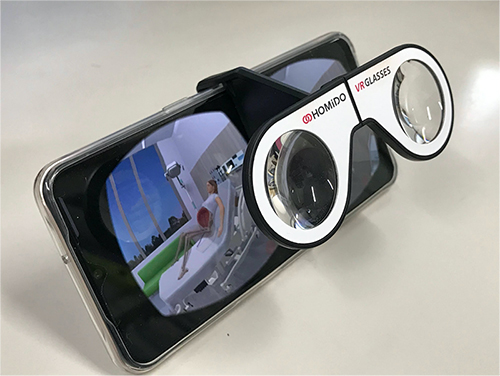
Gray M, Downer T, Hartz D, Andersen P, Hanson J, Gao Y. The impact of three-dimensional visualisation on midwifery student learning, compared with traditional education for teaching the third stage of labour: A pilot randomised controlled trial. Nurse Educ Today. 2022 Jan;108:105184.
AR MIXED REALITY SUPPORT AND EDUCATION
Virtual reality (VR) learning typically requires expensive simulators; however, UTokyo Nursing is implementing the latest upgrades to VR which includes a head-mounted device to simulate the nursing experience and teach vital nursing skills without the drain on cost. Features include the ability to learn at any time and any place, and the ability to acquire skills actively by hand-tracking, as well as the conventional passive VR experience. The system is being deployed not only in undergraduate education, but also in hospitals and home nursing as on the job training. This is not the education of the future per say, but is rather one of digital transformation in nursing education that is taking place today.
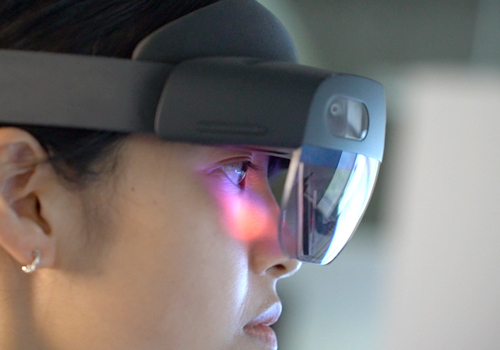
Takahashi T, Kitamura A, Matsumoto M, Higashimura S, Nakagami G, Sanada H. Introduction of augmented reality to the remote nursing consultation system for wound care. J Wound Care (accepted)
Artificial intelligence (AI) analysis of real world data

Nakagami G, Yokota S, Kitamura A, Takahashi T, Morita K, Noguchi H, Ohe K, Sanada H. Supervised machine learning-based prediction for in-hospital pressure injury development using electronic health records: A retrospective observational cohort study in a university hospital in Japan. Int J Nurs Stud. 2021;119:103932. doi: 10.1016/j.ijnurstu.2021.103932.
Data. Although data is a critical aspect of any university, its relevance to the real world often goes unrealized. That’s why at UTokyo Nursing we make a driven effort to apply our data to real world situations, not just to academics and the scientific literature. For example, one of our projects examined the utility of artificial intelligence (AI) in analyzing real world data. Researchers joined with the Department of Planning and Information Management of the University of Tokyo Hospital to gather a large amount of clinical information entered into electronic health records, and through supervised machine learning were able to determine previously unknown risk factors for developing pressure wounds (difficulty with daily living activities and anorexia). By actively engaging in data collection directly applicable to a clinical setting, we further both the scientific knowledge base and the ability to make immediate changes in nursing that improve outcomes.
Smart Dressings for Prediction and Prevention of Hard-to-heal Wounds
Hard-to-heal wounds occur frequently in the elderly, but are hard to prevent because the mechanism of onset is unknown. Therefore, we focus on the fact that components that promote or delay wound healing are contained in the exudate (wound fluid) produced from the wound, and identify the causative factors of hard-to-heal wounds through multi-omics analysis of the viable cells within the exudate. We aim to eradicate hard-to-heal wounds by developing smart dressings that constantly monitor the concentrations of the biomarkers in the exudate and respond with automatic initiations of optimal treatment to prevent further hindrance to wound healing.
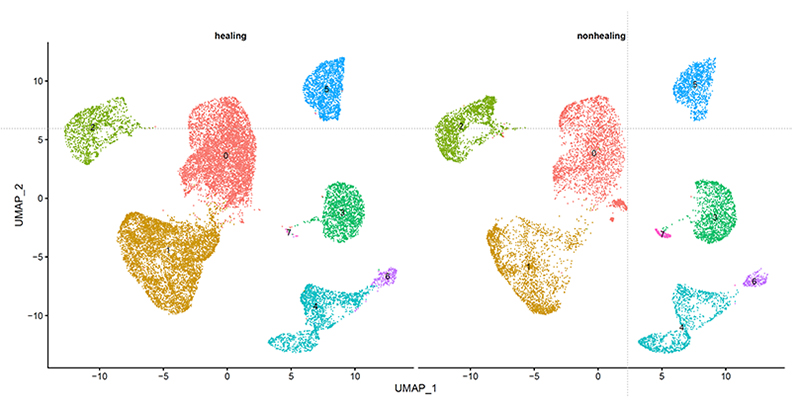
Product development through Industry -Academia Collaboration
Product development. UTokyo Nursing has a unique strength: developing products in collaboration with industries. This, along with our transdisciplinary approach, allows us to ensure that our products are specifically designed to meet patients’ needs and to improve their quality of life. One such product is the new robotics mattress, which, rather than distributing one constant air pressure based on patient weight, adjusts pressure distribution automatically in response to patient positioning through a system of sensors and positioning cells that interactively alter air pressure to optimize patient comfort. Not only does this product increase comfort and reduce the pain associated with repositioning, it helps to prevent pressure injuries.

LEIOS, a robotics mattress for puressure injury prevention, co-developed with Molten Co. Ltd.
Saegusa M, Noguchi H, Nakagami G, Mori T, Sanada H. Evaluation of comfort associated with the use of a robotic mattress with an interface pressure mapping system and automatic inner air-cell pressure adjustment function in healthy volunteers. J Tissue Viability. 2018;27(3):146-152. doi: 10.1016/j.jtv.2018.06.002.
Another product that uses the results of joint research with industry is an absorbent pad for incontinent people. The pad effectively minimizes contact of urine and stool with the skin, which can be irritating to the skin. Working alongside the Daio Paper Corporation, we have succeeded in creating various pads that improve absorption efficiency. One does so by spot-absorbability of urine and another is a pad with a layered structure that includes a surface sheet and absorbent material with excellent soft-stool absorption.
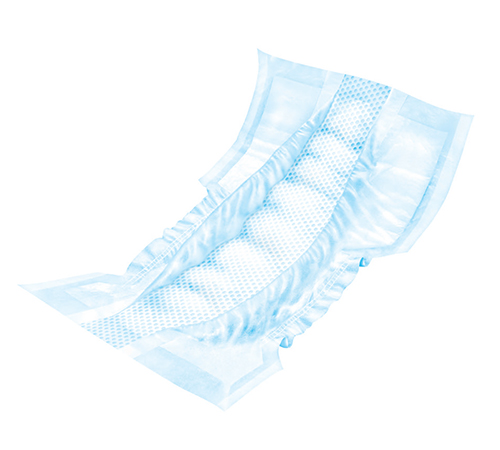
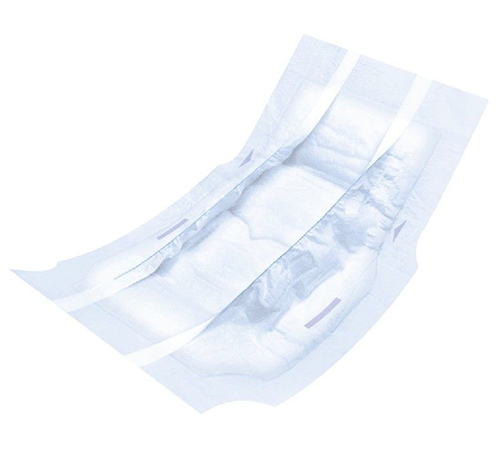
Special absorption efficient pads designed through collaboration between UTokyo Nursing and the Daio Paper Corporation.
Sugama J, Sanada H, Shigeta Y, Nakagami G, Konya C. Efficacy of an improved absorbent pad on incontinence-associated dermatitis in older women: cluster randomized controlled trial. BMC Geriatr. 2012;12:22. doi: 10.1186/1471-2318-12-22.
Case study methodology to clarify the meaning of care.
Our current development of a research method called “Clarifying the Meaning of Care Through Case Study Experience” aims to make it possible to share unique knowledge characterized by its holistic, personalized, and contextual nature. True care requires an intersubjective understanding of the patient experience, and such intersubjectivity can in turn be used as a means to deepen others’ understanding of this interpersonal knowledge that can be applied to their own practices. To accomplish this, it is necessary to understand care providers’ specific experiences of intersubjectively, which creates untraditional, phenomenological case studies.

